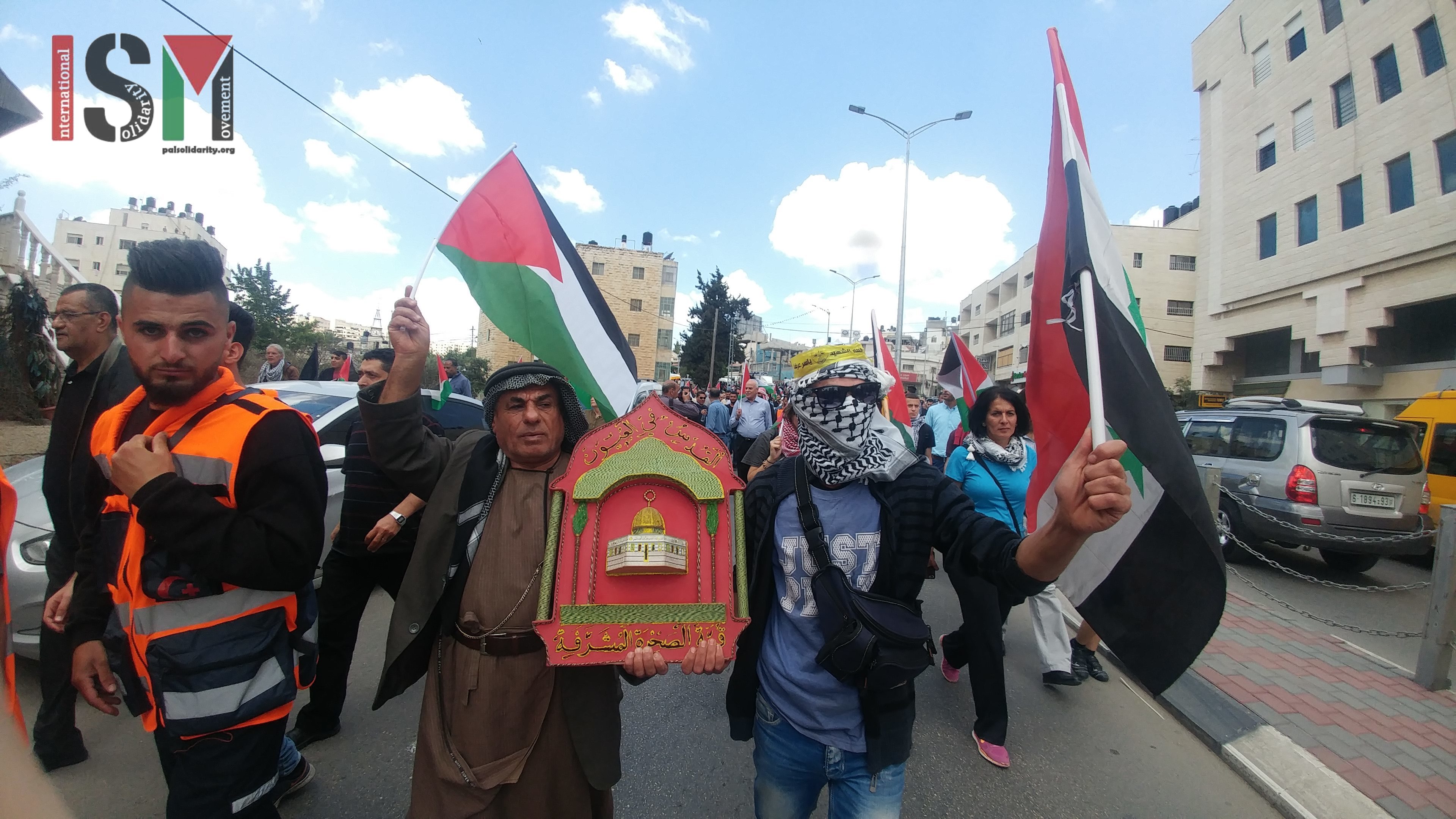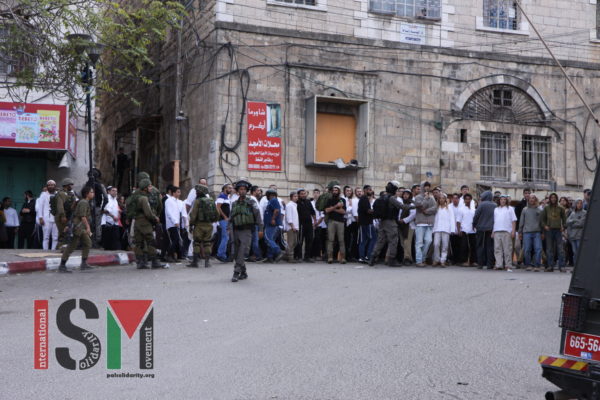Category: Reports
-
“We witnessed at least 40 Palestinians dropping to the ground from tear gas inhalation”
On Monday the 14th of May at 11am, thousands of Palestinians gathered in Arafat Square in Ramallah and proceeded to march to Qalandiya checkpoint to confront Israeli forces. The US embassy was officially moved to Jerusalem on this same day. Palestinians held signs and placards to assert their right of return and in remembrance of…
-
Severe restrictions for Palestinians, freedom of movement for settlers.
02/04/2018, International Solidarity Movement, Al Khalil/Hebron Today Israeli forces sealed off parts of three streets in Palestinian controlled H1 near Bab Azawiyeh ordering more than fifty Palestinian shops to close for ‘security reasons’. Israeli forces also closed the Al Ibrahimi Mosque and the checkpoint adjacent to it for two whole days. Pictured: Israeli forces seal…



